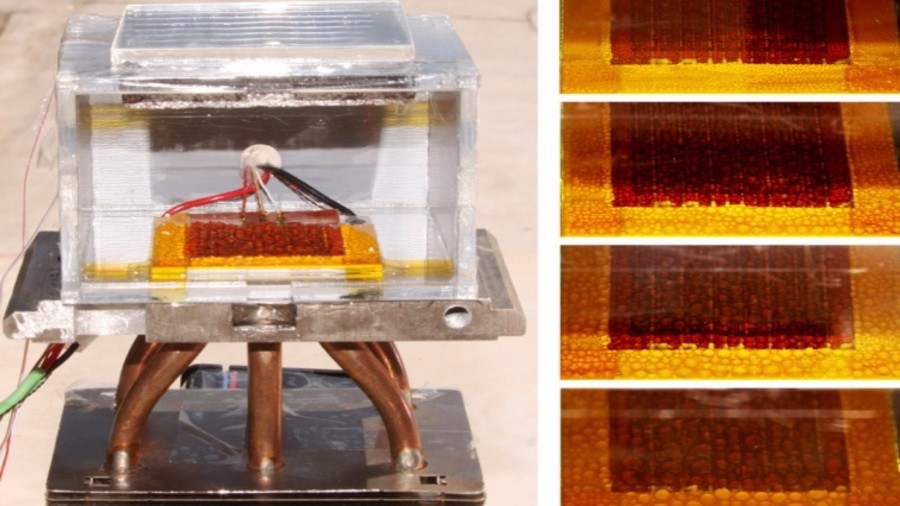MIT’s New Device Harvests Water From Dry Air In Desert

The accessibility of drinking-water is a major concern throughout the world especially in arid regions with extremely low humidity levels.
In a path-breaking development, MIT researchers have created water harvesting system that can extract drinkable water right out of the driest of desert air.
The concept behind it was proposed last year by lead authors Sameer Rao (MIT postdoc) and Hyunho Kim (SM ’14, Ph.D. ’18) along with four others at MIT and the University of California at Berkeley.
According to researchers, the potential of the new method has been confirmed, and it can extract water from air with relative humidities as low as 10 percent.
Since existing methods of water extraction require much higher humidity levels ranging from 50 to 100 percent moisture, this new model can prove to be a savior for millions of people.
Powered entirely by sunlight, the test device can produce water as high as three times its current version given that the right material is used in it.
Also, the system has no moving parts, which is why it will function longer in comparison to systems that need pumps and compressors.
Even though the device requires a large amount of sunlight, but “continuous operation is also possible by utilizing abundant low-grade heat sources such as biomass and waste heat”, according to researchers.
The best part is that the water obtained from the system is of high quality and drinkable with no traces of impurities from the MOFs used in it.
Hopefully, we would see a more stable and large-scale model in future that could be used to solve the problem of water scarcity across the world.
Also Read: This Algorithm Can Simulate Our Brain At 100%, But No Supercomputer Can Run It






